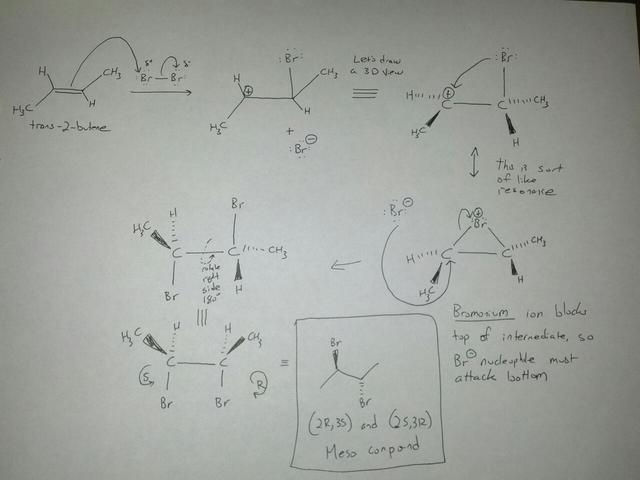
- BROMINATION MECHANISM CHEM DRAW INSTALL
- BROMINATION MECHANISM CHEM DRAW SERIES
- BROMINATION MECHANISM CHEM DRAW FREE
6 study is extended to more than 525 reactions reported in the literature and we present a new semiempirical quantum mechanical (SQM)-based method that improves both the accuracy and precision of the predictions. Finally, the sound judgment of chemists was required to evaluate the reactivity of unsubstituted and electron-deficient benzenes, and the method failed for 1,2,4-triazoles. Conversely, DFT calculations are time-consuming for larger compounds and cannot be performed by non-expert users and there is a certain degree of subjectiveness in predicting the regioselectivity based on the HOMO orbitals. 6 The chemical shifts were obtained immediately from the structure using ChemDraw. For many of the remaining cases, the regioselectivity was rationalized by visual inspection of the HOMO orbital computed using DFT, bringing the success rate up to ca. 80% of 130 EAS reactions from the literature.

It was recently reported that empirically calculated 1H and 13C chemical shifts can be applied to retrospectively account for the regiochemical outcome of ca. 6 In a broader sense, the ability to block the more reactive site(s) in complex heteroaromatics may increase the use of halogens as protective groups in arene chemistry. This paper provides a fast, reliable, and easy-to-use computational tool to predict the site selectivity of EAS reactions more robustly than our previously reported NMR-based method. It is critical that prospective methods are easy for the end-users to work with to have a significant impact. 5 Thus, there is an unmet need for synthetic chemists to be able to predict the regioselectivity of EAS reactions.
BROMINATION MECHANISM CHEM DRAW INSTALL
Consequently, organic chemists tend to install the halogens early in the synthesis because they are not comfortable with late-stage functionalization.
BROMINATION MECHANISM CHEM DRAW SERIES
4 Unlike the benzene series for which the relative reactivity of the substrates is textbook knowledge, it is not a priori obvious at which position(s) halogenation will occur for heteroaromatic systems, especially in compounds that contain multiple (hetero)aromatic rings or in compounds that contain both heteroarene and benzene rings. 3 Halogenated arenes are also important substrates for directed metallation reactions and for the generation of organolithium and organomagnesium species by metal–halogen exchange, metal insertion, or direct metallation.

1,2 The prerequisite (hetero)aryl halides are typically prepared by electrophilic aromatic substitution (EAS). Their halogenated derivatives are often applied as substrates in carbon–carbon and carbon–heteroatom cross-coupling reactions such as Suzuki–Miyaura, Heck, and Buchwald–Hartwig couplings.

Introduction Heteroaromatics and benzene derivatives constitute important structural classes in drug discovery, agrochemistry, and material science. RegioSQM should therefore be of practical use in the planning of organic synthesis. The computational cost is 1–10 minutes per molecule depending on size, using relatively modest computational resources and the method is freely available via a web server at. The method is automated and requires only a SMILES string of the molecule of interest, which can easily be generated using chemical drawing programs such as ChemDraw.

These positions are found to correlate qualitatively with the regiochemical outcome in a retrospective analysis of 96% of more than 525 literature examples of electrophilic aromatic halogenation reactions.
BROMINATION MECHANISM CHEM DRAW FREE
RegioSQM protonates all aromatic C–H carbon atoms and identifies those with the lowest free energies in chloroform using the PM3 semiempirical method as the most nucleophilic center. The RegioSQM method for predicting the regioselectivity of electrophilic aromatic substitution reactions of heteroaromatic systems is presented in this paper. While computational prediction of chemical reactivity is possible it usually requires expert knowledge and there are relatively few computational tools that can be used by a bench chemist to help guide synthesis.


 0 kommentar(er)
0 kommentar(er)
